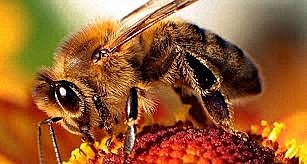Assessment of honeybee enemies (pests and predators) in Bale zone, Southeastern Ethiopia
Keywords:
Enemies, Honeybee, Pests and predators, Bale zoneAbstract
Among all constraints of beekeeping, natural bee enemies are known to cause great damage on the life and the product of honeybees through causing absconding and migration. A study was conducted in Bale from July, 2010- June, 2012 in six districts with the objective of assessing the effect of natural bee enemies on the life of honeybees and their products. From each district 3 Rural Kebeles (RK’s) and 10 beekeepers from each RK’s were purposively selected and a total of 180 beekeepers were participated. The selected beekeepers were interviewed using pre-tested structured questionnaires and single-visit-multiple formal survey method to collect the data. The collected data were analyzed using SPSS version 20 software and descriptive analysis method. The majority (96.86%) of the respondents in the study area were followed traditional production system, but only few beekeepers were started transitional (0.88) and modern (2.26) beekeeping production system. In the study area honeybees’ enemies, agro-chemicals, lack of knowledge to manage bees and bee products, lack of bee colonies and bees poisoning from plants identified as major beekeeping constraints. Respondents were asked to identify major honeybee pests and predators. Based on the result of this study, the existence of pests and predators were a major challenge to the honeybees and beekeepers in the study area. In all surveyed area the beekeepers were reported that the presence of Honey badger, spider, bee-eating birds, bee lice, Beetles, wasps, Death Head hawks moth Mice and lizards in order of their decreasing importance. Traditionally, the beekeepers were used their own control mechanisms of protecting these pests and predators like application of ash under the stand of the hive, hanging hives by rope on long trees, cleaning around the apiary site, using dog for large predators like honey badger, fencing their apiary site and mechanical like killing of the predators and pests etc. About 72.6% of the respondents reported that honey production trend in the area were decreasing and 25.1% and 2.2 was said increasing and unchanged trend of production system respectively. Despite the challenges of beekeeping, it is realized that there is potential of beekeeping in Bale, though the production system is traditional and there is an opportunity of improving the situation since there are plenty of beekeeping resources.References
Adgaba, A.A., Ghamdi, A.G., Shenkute, S., Ismaiel, S.A., Kahtani, Y., Tadess, M.J., Ansari, W., Abebe, M.Q., Abdulaziz, A., 2014. Socio economic analysis of beekeeping and determinants of box hive technology adoption in the kingdom of Saudi Arabia. J. Anim. Plant. Sci., 24(6), 1876-1884.
Crane, E., 1990. Bees and beekeeping, science, practice and world resource, Heineman, Newness, London.
Desalegn, B., 2001. Honeybee pest and predators of Ethiopia proceedings of the third national annual conference of Ethiopian beekeepers association (EBA). September 3-4, Addis Ababa, Ethiopia: 59-67.
Desalegn, B., 2015. Honeybee diseases and pests research progress in Ethiopia: A review. Afr. J. Insect, 3(1), 093-096.
Gichora, M., 2003. Towards realization of kenya’s full beekeeping potential: A case study of Baringo district. Ecology and development series No.6, 2003. Cuvillier Verlag Gottingen, Gottingen, Germany. 157p.
Haftu, K., Gezu, T., 2014. Survey on honeybee production system, challenges and opportunities in selected areas of Hadya zone, Ethiopia. J. Agr. Biotechnol. Sustain. Dev., 6(6), 60-66.
Jatema, D., Abebe, B., 2015. Survey on major honey bee pests and predators in Oromia special zone surrounding finfine in Walmara district. Eur. J. Biol. Sci., 7(2), 62-70.
Kebede, T., Lemma, T., 2007. Study of honey production systems in Adami Tulu Jido Kombolcha district in mid rift valley of Ethiopia. Livest. Res. Rural. Dev., 19, 11.
Kinati, C., Tolemariam, T., Debele, K., Tolosa, T., 2012. Opportunities and challenges of honey production in Gomma district of Jimma zone, South-west Ethiopia. J. Agr. Ext. Rural. Dev., 4(4), 85-91.
Moeller, F.E., 1982. Managing colonies for high yields Tompkins and Griffith (Eds.). In garden way’s practical beekeeping, 119-130.
Oyerinde, A.A., Ande, A.T., 2009. Distribution and impact of honey bee pests on colony development in Kwara State, Nigeria. J. Agr. Soc. Sci., 5, 85-88.
SARC, 2001. Profile of Sinana Agricultural Research Center (SARC). Oromia Agricultural Research Institute. Working Document Series 1, November 2001, Addis Ababa, Ethiopia.
Shenkute, A.G., Getachew, Y., Assefa, D., Adgaba, N., Ganga, G., Workneh, A., 2012. Honey production systems (Apis mellifera L.) in Kaffa, Sheka and Bench-Maji zones of Ethiopia. J. Agr. Ext. Rural. Dev., 4(19), 528-541.
Tessega, B., 2009. Honeybee production and marketing systems, constraints and opportunities in Burie district of Amahara region, Ethiopia.
Williams, S., 2002. Bale mountains: A guide book. United Printers, Addis Ababa, Ethiopia. 52p.
Workneh, A., 2006. Identification and documentation of indigenous knowledge of beekeeping practice. Proceedings of the 14th Ethiopian Society of Animal Production, ESAP. Addis Ababa.

Published
How to Cite
Issue
Section
Copyright (c) 2020 Bekele Tesfaye, Genet Dadi, Temaro Gelgelu

This work is licensed under a Creative Commons Attribution-NonCommercial-NoDerivatives 4.0 International License.



